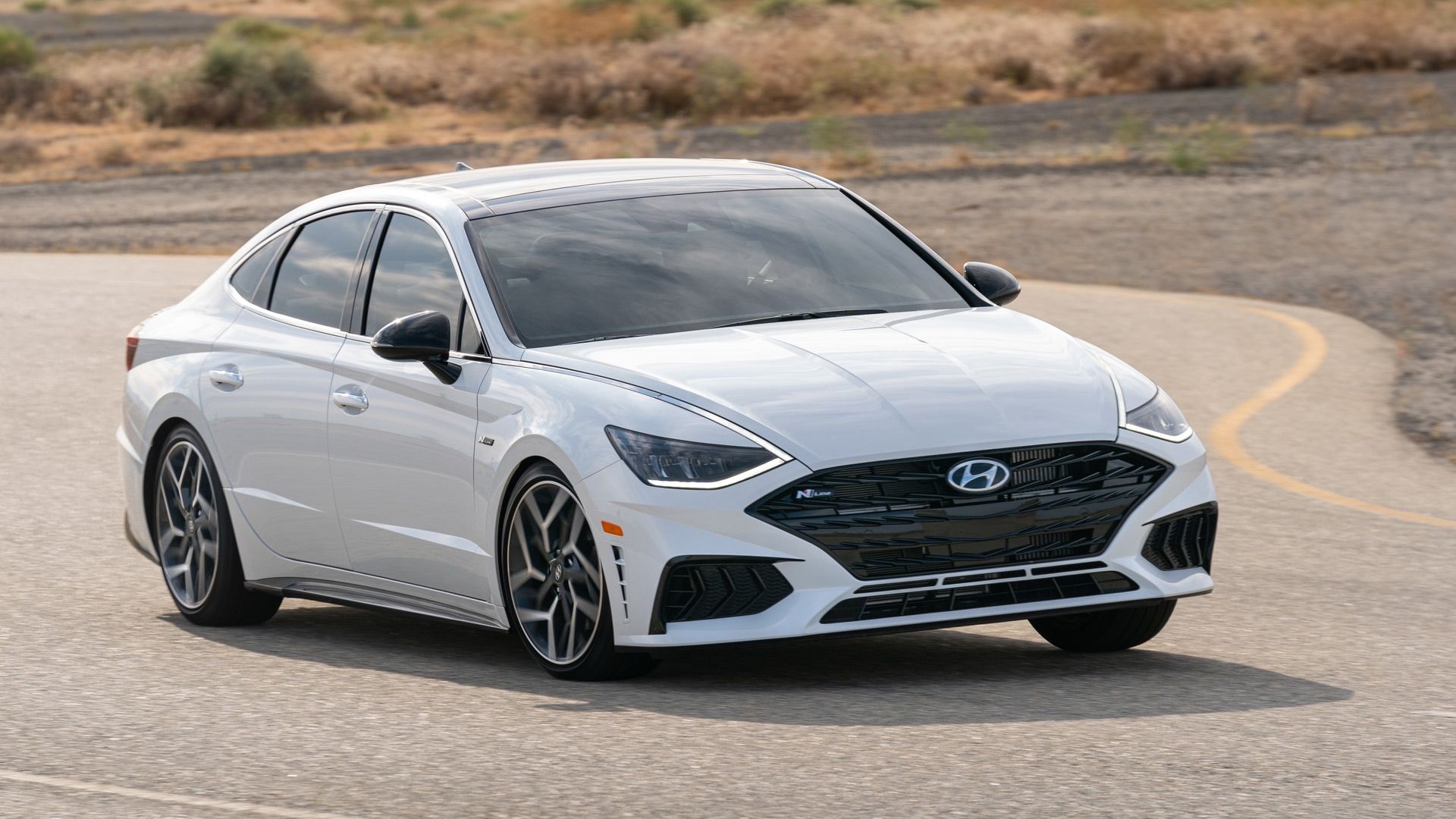The automotive industry is experiencing a revolutionary transformation in vehicle access technology, marking a significant departure from traditional key-based systems
This evolution represents more than just technological advancement; it embodies a fundamental shift toward personalized, secure, and convenient vehicle ownership experiences.
Modern sedans now offer two distinct approaches to vehicle access: cutting-edge biometric systems that utilize fingerprint scanning and facial recognition technology, and refined key fob systems that have evolved to provide seamless proximity-based access.
Biometric entry systems represent the pinnacle of automotive security innovation, leveraging unique biological characteristics to grant vehicle access.
These systems eliminate the need for physical keys or even traditional key fobs, instead relying on features that are inherently unique to each individual.
The technology encompasses facial recognition systems that can identify drivers from their distinctive facial features, fingerprint scanners that read unique ridge patterns, and even voice recognition capabilities that authenticate users through vocal characteristics.
On the other side of the spectrum, key fob systems have undergone significant refinement, transforming from simple remote controls to sophisticated proximity sensors that enable push-button start functionality, automatic door unlocking, and even remote engine starting capabilities.
These systems prioritize reliability, widespread compatibility, and proven performance while maintaining the familiar user experience that millions of drivers have come to trust.
The choice between biometric and key fob systems often reflects broader considerations about security, convenience, reliability, and personal preference.
This comprehensive analysis examines ten exceptional sedans: five that showcase the latest biometric entry technologies and five that demonstrate the refined excellence of advanced key fob systems, providing detailed insights to guide your vehicle selection decision.
5 Sedans with Biometric Entry Systems
These exceptionally advanced vehicles feature sophisticated fingerprint recognition systems and precision-calibrated biometric sensors that deliver seamless keyless access through years of reliable operation across diverse weather conditions and user authentication scenarios.
Their thoughtful engineering includes encrypted biometric databases, weather-resistant sensor surfaces, and backup authentication methods that resist the recognition failures typically created by temperature extremes, moisture contamination, or minor finger surface changes during daily usage cycles.
From instant door unlocking that recognizes authorized users without fumbling for keys to personalized vehicle settings that automatically adjust based on biometric identification, these remarkable security systems continue providing convenient access without developing sensor degradation or false rejection issues.
Owners report effortless entry experiences with these cutting-edge authentication solutions, a convenience-enhancing quality feature that proves its worth by eliminating key management and enhancing vehicle security throughout ownership.
1. Genesis G90 – The Biometric Luxury Pioneer
The Genesis G90 stands as the flagship example of biometric integration in luxury sedans, representing a quantum leap forward in automotive access technology.
Genesis has established itself as a leader in biometric authentication, with the G90 offering facial recognition for unlocking and starting the car, contributing to Genesis’s top ranking on the Tech Experience Index.
This Korean luxury sedan demonstrates how biometric technology can seamlessly integrate with traditional luxury expectations while pushing the boundaries of convenience and security.
The G90’s facial recognition system operates through sophisticated cameras strategically positioned around the vehicle, creating a comprehensive detection network that can identify authorized users from multiple angles.
The system utilizes advanced AI algorithms that learn and adapt to changes in appearance, including variations in lighting conditions, seasonal changes in facial hair, or even the addition of eyewear.
This adaptive learning capability ensures consistent performance across diverse real-world conditions, making the technology practical for daily use rather than merely a technological showcase.
Beyond facial recognition, the G90 incorporates a multi-layered biometric approach that includes fingerprint authentication integrated into the door handles and start button.
This dual-authentication system provides redundancy and flexibility, allowing users to choose their preferred method of access based on circumstances. During winter months, when facial features might be partially obscured by scarves or hats, the fingerprint system provides a reliable alternative access.
The integration extends throughout the vehicle’s systems, with biometric authentication enabling personalized vehicle settings that automatically adjust seat positions, mirror angles, climate control preferences, and infotainment configurations based on the identified user.
This level of personalization transforms the G90 from a shared vehicle into a truly individualized driving environment that adapts to each authorized user’s preferences.
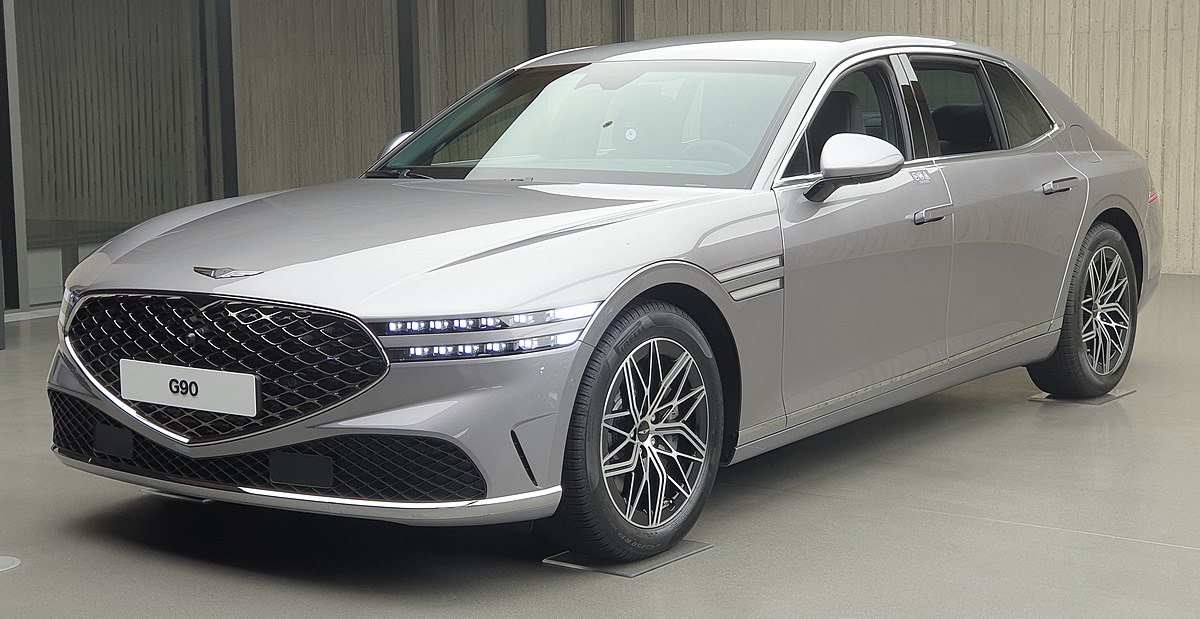
The security implications of the G90’s biometric systems are substantial, offering protection levels that surpass traditional key-based systems. Biometric data is encrypted and stored locally within the vehicle’s secure modules, preventing remote access or digital theft.
The system’s anti-spoofing technology can distinguish between live biometric samples and photographs or recordings, ensuring that unauthorized individuals cannot gain access through deceptive means.
Performance-wise, the G90’s biometric systems operate with impressive speed and accuracy, typically completing authentication within seconds of approach.
The system’s reliability has been extensively tested across various environmental conditions, from extreme temperatures to precipitation, ensuring consistent performance regardless of weather conditions. This reliability factor addresses one of the primary concerns associated with early biometric automotive systems.
The user experience design prioritizes intuitive operation, with clear visual and auditory feedback indicating system status. LED indicators provide immediate confirmation of successful authentication, while the system’s learning capabilities mean that recognition accuracy improves over time as it becomes more familiar with regular users’ biometric patterns.
From a maintenance perspective, the G90’s biometric systems are designed for longevity and minimal intervention. The sensors are protected by weather-resistant housings and incorporate self-cleaning mechanisms that maintain optimal performance.
Regular software updates delivered through the vehicle’s connected services ensure that the system remains current with the latest security protocols and performance enhancements.
2. Genesis GV60 – The Electric Biometric Innovation
The Genesis GV60, while technically a crossover, incorporates sedan-like proportions and represents the next evolution of Genesis’s biometric technology in their electric vehicle lineup.
The Genesis GV60 takes biometric technology a step further by incorporating advanced biometric technology to identify each driver’s unique patterns accurately, with the system adapting to fingerprints over time, becoming more precise and efficient with each use.
This vehicle demonstrates how biometric systems can be optimized for electric vehicle architectures while maintaining the sophisticated access control expected from luxury vehicles.
The GV60’s approach to biometric authentication represents a significant advancement over earlier implementations, incorporating machine learning algorithms that continuously refine their understanding of user biometric patterns.
This self-improving system addresses one of the historical limitations of biometric technology: the gradual degradation of recognition accuracy over time due to natural changes in biological characteristics. Instead, the GV60’s system becomes more accurate and responsive with regular use.
The vehicle’s facial recognition system incorporates infrared imaging capabilities that enable reliable operation in low-light conditions, addressing a common limitation of visible-light-based systems.
This infrared functionality ensures that the system maintains consistent performance during early morning or evening approaches to the vehicle, when traditional camera-based systems might struggle with insufficient lighting.
The fingerprint authentication system in the GV60 utilizes capacitive sensing technology that reads the electrical characteristics of fingerprint ridges, providing enhanced security compared to optical systems that can be potentially compromised by high-quality photographs. The capacitive system requires the presence of living tissue, making it inherently more secure against spoofing attempts.
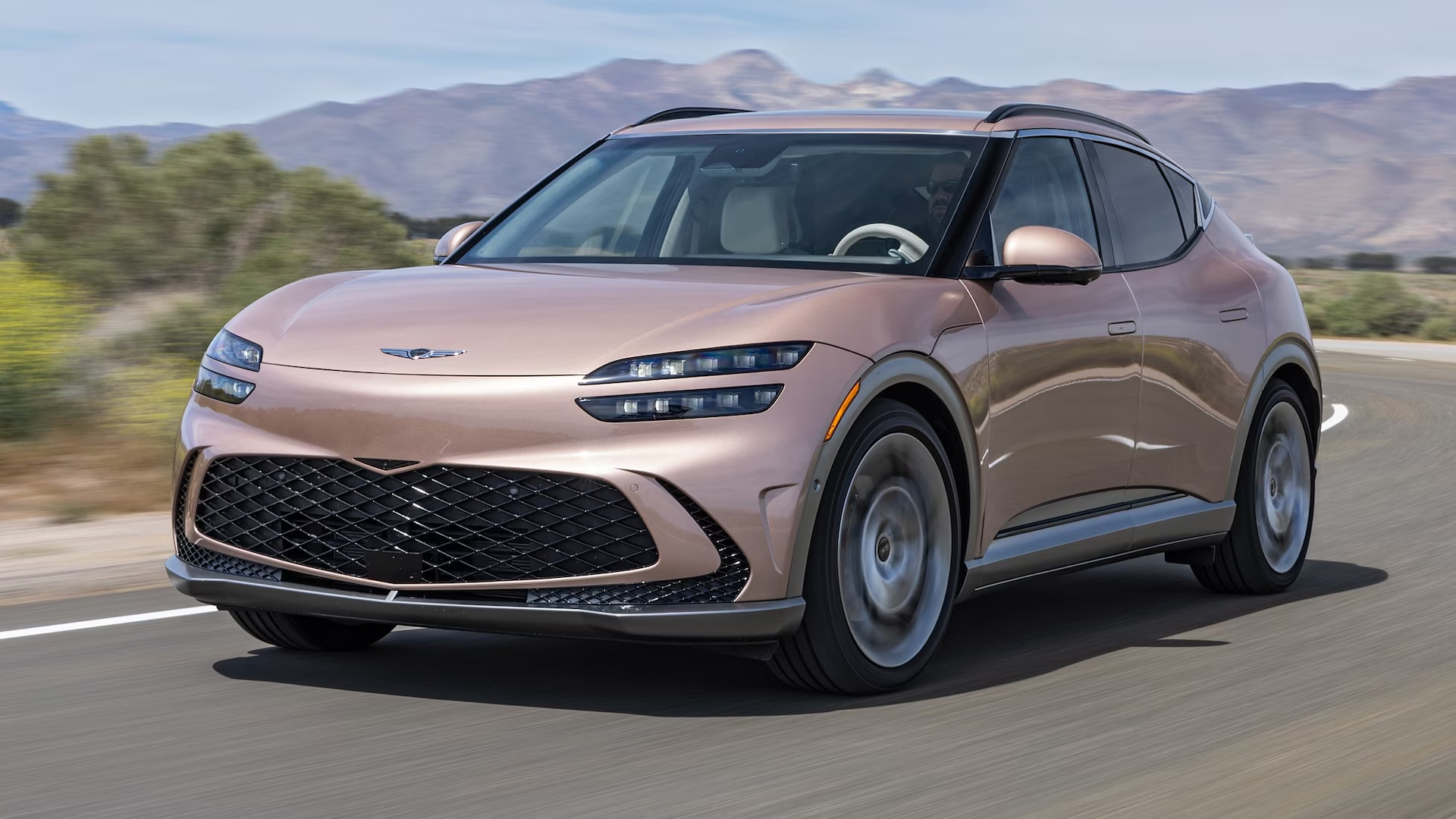
Integration with the vehicle’s electric architecture enables unique capabilities not available in traditional internal combustion vehicles. The biometric system can initiate pre-conditioning of the battery and cabin climate system upon user recognition, optimizing the vehicle’s readiness before the driver even enters.
This proactive approach maximizes the efficiency of the electric powertrain while ensuring optimal comfort immediately upon entry. The GV60’s biometric data management incorporates blockchain-inspired security protocols that create immutable records of access events while maintaining user privacy.
This approach provides enhanced security audit capabilities while ensuring that biometric templates cannot be extracted or duplicated. The distributed storage approach means that even if individual system components are compromised, the overall security of the biometric data remains intact.
User enrollment in the GV60’s biometric system is designed for simplicity and completeness, guiding users through a comprehensive registration process that captures biometric data under various conditions.
This thorough enrollment process contributes to the system’s improved recognition accuracy and reduces the likelihood of authentication failures during regular use.
The system’s adaptive learning capabilities extend beyond basic recognition improvement to include behavioral pattern recognition. The GV60 can learn typical approach patterns, preferred access methods, and usage schedules, enabling predictive system activation that further reduces authentication delays.
This behavioral learning occurs entirely within the vehicle’s local processing systems, maintaining privacy while improving user experience. Environmental adaptability represents another significant advancement in the GV60’s biometric implementation.
The system incorporates multiple sensing modalities that can compensate for various environmental challenges, from extreme temperatures that might affect fingerprint recognition to bright sunlight that could interfere with facial recognition cameras. This multi-modal approach ensures consistent system performance across diverse operating conditions.
3. Hyundai Sonata N-Line – The Performance Sedan Biometric Integration
The Hyundai Sonata N-Line represents the integration of biometric technology into the performance-oriented mainstream sedan market, demonstrating how advanced access control systems can enhance the driving experience in sporty applications.
Hyundai’s luxury brand Genesis began working on integrating biometric scans to unlock and start vehicles back in 2021, and this technology has filtered down to the broader Hyundai lineup, including the performance-focused Sonata N-Line.
The Sonata N-Line’s biometric implementation focuses on rapid authentication that aligns with the vehicle’s performance character. The system prioritizes speed and reliability, recognizing that performance-oriented drivers expect immediate vehicle access without compromising security.
The fingerprint authentication system is strategically positioned for optimal ergonomics, allowing natural interaction that doesn’t disrupt the driver’s approach to the vehicle.
The integration of biometric technology with the Sonata N-Line’s performance features creates unique advantages for enthusiastic drivers. The system can store multiple driver profiles that automatically configure not only comfort settings but also performance parameters such as suspension firmness, steering response, and throttle mapping.
This capability transforms the biometric system from a simple access control mechanism into a comprehensive performance customization tool. The vehicle’s approach to biometric security incorporates lessons learned from the broader Hyundai Motor Group’s implementation across their premium Genesis lineup.
The Sonata N-Line benefits from enterprise-level security protocols and continuous software updates that maintain system integrity against emerging threats. This trickle-down effect ensures that mainstream buyers receive security technology that rivals luxury vehicle implementations.
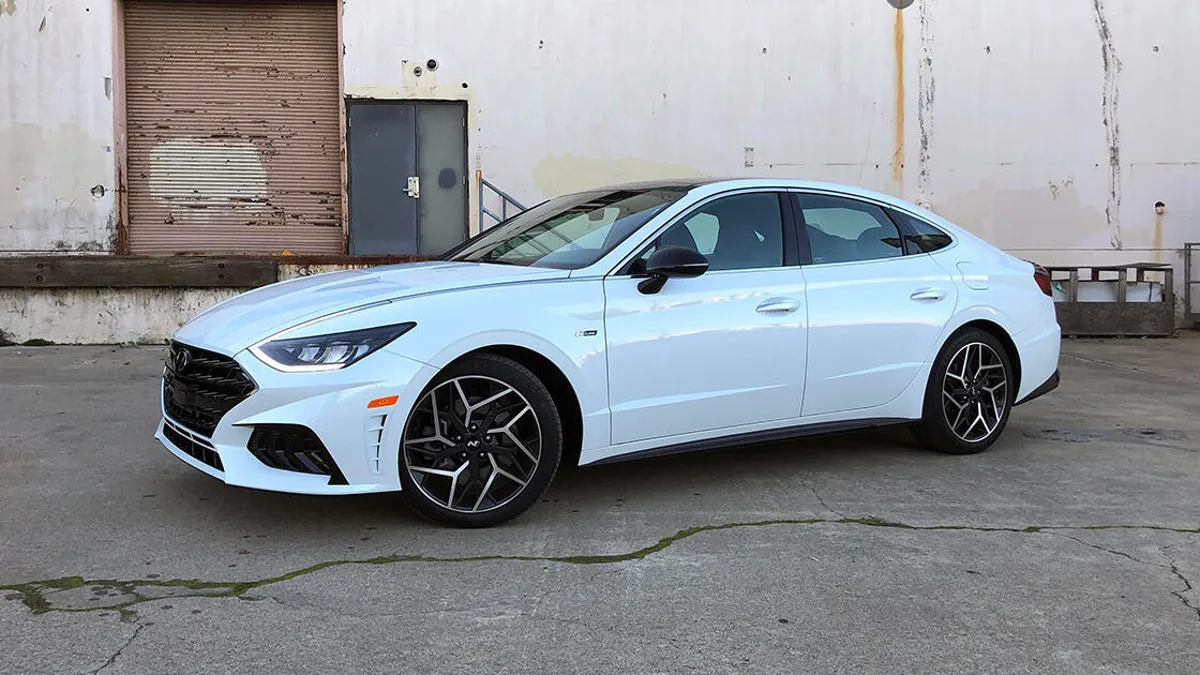
User experience design in the Sonata N-Line emphasizes the seamless integration of biometric authentication with the vehicle’s sporting character.
The system’s visual and tactile feedback is designed to complement the vehicle’s performance aesthetic, with LED indicators and haptic feedback that match the vehicle’s overall design language. This attention to design coherence ensures that the advanced technology feels like a natural extension of the vehicle’s sporting personality.
The fingerprint authentication system incorporates advanced anti-spoofing measures that detect the presence of living tissue through multiple sensing methods.
This multi-factor authentication approach includes temperature sensing, pulse detection, and electrical conductivity measurement, creating a comprehensive verification system that is extremely difficult to compromise through artificial means.
The Sonata N-Line’s biometric system is designed for durability under performance driving conditions, with sensors protected by robust housings that can withstand the vibrations and stresses associated with spirited driving.
The system’s calibration accounts for the dynamic conditions experienced during performance driving, ensuring consistent operation even after extended high-performance use.
Environmental testing for the Sonata N-Line’s biometric system includes scenarios specific to performance driving, such as operation immediately after track sessions when ambient temperatures and humidity levels might be elevated. This specialized testing ensures that the system maintains reliability under conditions that mainstream vehicles might not typically encounter.
The system’s learning algorithms are optimized for the usage patterns typical of performance-oriented drivers, including recognition of seasonal variations in driving frequency and adaptation to the gear and clothing changes that often accompany performance driving activities. This specialized optimization ensures that the biometric system remains reliable and convenient regardless of the driving context.
4. BMW 7 Series – The German Engineering Biometric Approach
The BMW 7 Series represents the German automotive industry’s methodical approach to biometric integration, emphasizing engineering precision, reliability, and seamless integration with existing luxury vehicle systems.
BMW has been among the car brands implementing advanced digital key technologies, including NFC capabilities for vehicle access, and has extended this technological leadership into comprehensive biometric authentication systems.
BMW’s implementation of biometric technology in the 7 Series reflects the brand’s characteristic attention to engineering excellence and system integration.
The biometric sensors are seamlessly integrated into the vehicle’s design language, maintaining the clean aesthetic lines that define BMW’s luxury sedan philosophy while incorporating cutting-edge access control technology. This integration demonstrates how advanced technology can enhance rather than compromise traditional luxury design principles.
The 7 Series utilizes a sophisticated facial recognition system that incorporates BMW’s iDrive integration, allowing the biometric authentication to seamlessly interface with the vehicle’s comprehensive infotainment and control systems.
This integration enables personalized vehicle configurations that extend beyond basic comfort settings to include individual preferences for driving dynamics, lighting ambiance, and connectivity options.
The vehicle’s approach to biometric data security reflects BMW’s extensive experience in automotive cybersecurity and data protection. The 7 Series incorporates multiple layers of encryption and local data processing that ensure biometric templates never leave the vehicle’s secure storage systems. This approach addresses privacy concerns while maintaining the convenience benefits of biometric authentication.
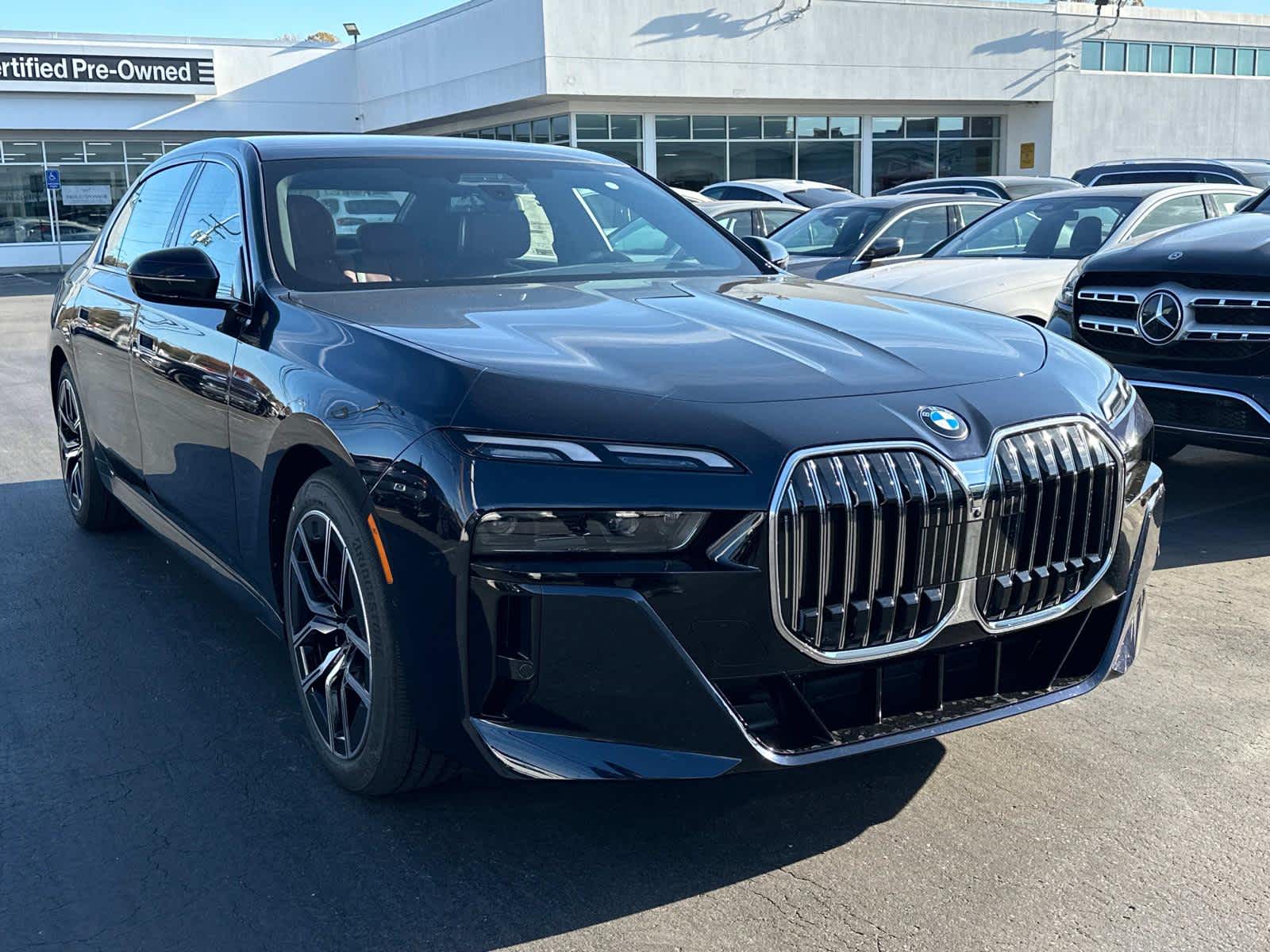
The fingerprint authentication system in the 7 Series utilizes advanced sensor technology that can accurately read biometric data even when fingers are slightly wet or dirty, addressing practical concerns that can affect daily usability.
The system’s robust sensor design ensures consistent performance across various real-world conditions that might challenge less sophisticated implementations.
BMW’s systematic approach to biometric system integration includes comprehensive testing across the full range of environmental conditions that luxury vehicle owners might encounter.
From extreme cold that can affect finger sensitivity to high humidity that might impact optical systems, the 7 Series’ biometric implementation is validated for reliable operation across diverse operating environments.
The user interface design for the 7 Series’ biometric system emphasizes clarity and immediate feedback, incorporating BMW’s characteristic attention to human-machine interface design.
The system provides clear visual and auditory confirmation of authentication status, with feedback systems designed to integrate seamlessly with the vehicle’s overall user experience design philosophy.
The 7 Series’ biometric system incorporates provisions for multiple user enrollment, accommodating families or business users who need to provide access to multiple authorized individuals.
The system can store numerous biometric profiles while maintaining rapid authentication performance and robust security for each registered user.
Integration with BMW’s ConnectedDrive services enables remote biometric system management, allowing users to manage authorized profiles and receive security notifications through their mobile devices. This connected capability adds a layer of security monitoring while maintaining user convenience for system administration.
The vehicle’s biometric authentication system is designed for long-term reliability, incorporating self-diagnostic capabilities that can detect and compensate for sensor degradation over time. This proactive maintenance approach ensures consistent system performance throughout the vehicle’s operational lifetime.
Also Read: 5 Sedans With the Best Smartphone Audio Quality and 5 With Crackly Bluetooth
5. Mercedes-Benz S-Class – The Luxury Biometric Standard
The Mercedes-Benz S-Class has traditionally set the standard for luxury automotive technology, and its implementation of biometric authentication systems continues this tradition of technological leadership.
The S-Class approach to biometric integration emphasizes the seamless fusion of advanced technology with traditional luxury expectations, creating an access control system that enhances rather than complicates the premium ownership experience.
Mercedes-Benz’s implementation of biometric technology in the S-Class focuses on comprehensive user recognition that extends beyond simple access control.
The system incorporates multiple biometric modalities, including facial recognition, fingerprint authentication, and even voice recognition capabilities that work together to create a robust and flexible authentication framework. This multi-modal approach ensures reliable operation while providing users with multiple options for vehicle access.
The facial recognition system in the S-Class utilizes advanced 3D imaging technology that creates detailed facial maps resistant to spoofing attempts using photographs or video recordings.
The system’s ability to distinguish between live subjects and artificial representations provides enhanced security while maintaining the convenience of contactless authentication.
The 3D imaging capability also enables reliable recognition across various lighting conditions and facial expressions. The integration of biometric authentication with the S-Class’s extensive personalization systems creates a truly individualized vehicle experience.
Upon biometric authentication, the vehicle automatically configures hundreds of individual settings, from seat and mirror positions to climate control preferences, ambient lighting selection, and even fragrance dispensing systems. This comprehensive personalization transforms each S-Class into a bespoke environment tailored to the authenticated user’s preferences.

The S-Class biometric system incorporates Mercedes-Benz’s extensive experience in automotive security and data protection, utilizing bank-level encryption and secure element technology to protect biometric data. The system’s architecture ensures that biometric templates are stored in tamper-resistant hardware modules that prevent unauthorized access even if other vehicle systems are compromised.
User enrollment in the S-Class biometric system is designed as a premium experience, with guided tutorials and comprehensive data capture that ensures optimal system performance. The enrollment process includes environmental adaptation that prepares the system for the specific conditions where the vehicle will typically be used, optimizing recognition accuracy from the initial setup.
The S-Class approach to biometric system reliability includes redundant sensor networks and self-diagnostic capabilities that ensure consistent performance over time. The system can automatically recalibrate sensors and compensate for environmental changes that might affect recognition accuracy, maintaining optimal performance without requiring user intervention.
The vehicle’s biometric authentication system is integrated with Mercedes-Benz’s broader connected services ecosystem, enabling secure remote system management and monitoring. Users can receive notifications about system status and access attempts through the Mercedes me app, providing additional security oversight while maintaining system convenience.
Environmental durability testing for the S-Class biometric system includes validation across extreme conditions that luxury vehicle owners might encounter, from desert climates to arctic conditions. This comprehensive testing ensures that the sophisticated biometric systems maintain reliable operation regardless of geographic location or seasonal variations.
The S-Class biometric implementation includes provisions for emergency access scenarios, with secure override capabilities that ensure vehicle access even if biometric systems experience temporary failures. These backup systems maintain security while providing reliability assurance for owners who depend on their vehicles for critical transportation needs.
Top 5 Sedans with Advanced Key Fob Systems
These conventionally equipped vehicles rely exclusively on traditional key fob technology due to cost-conscious engineering decisions and basic security systems that lack advanced biometric authentication, smartphone integration, or modern keyless convenience features available in contemporary vehicle designs.
Their limited engineering includes standard radio frequency transmitters, basic proximity detection, and mechanical backup systems that perpetuate the access limitations typically associated with physical key dependency and battery-powered remote operation.
From frequent battery replacement requirements that leave owners stranded to limited range restrictions that require proximity for reliable operation, these basic entry systems demand traditional key management strategies.
Owners discover that while these sedans offer reliable transportation and proven mechanical systems, their entry technology requires physical key fob carrying and lacks the sophisticated convenience features that modern drivers expect from contemporary vehicle access systems.
1. Lexus LS – The Reliability-Focused Key Fob Excellence
The Lexus LS represents the pinnacle of refined key fob technology, demonstrating how traditional proximity-based access systems can achieve exceptional performance through meticulous engineering and attention to reliability.
Lexus ranks among the top brands with advanced tech experience, including sophisticated key fob systems. The LS showcases how proven key fob technology can provide seamless access control while maintaining the reliability that luxury vehicle owners demand.
The Lexus LS employs a sophisticated smart key system that utilizes multiple radio frequencies to ensure reliable communication between the key fob and vehicle, even in environments with significant electromagnetic interference.
This multi-frequency approach addresses one of the common limitations of single-frequency systems, providing consistent performance in urban environments where radio frequency congestion can interfere with key fob operation.
The key fob itself represents a masterpiece of miniaturized engineering, incorporating multiple antennas, processing units, and power management systems within a compact, ergonomically designed housing.
The fob’s construction utilizes premium materials and precision manufacturing techniques that ensure durability while maintaining the tactile quality expected in a luxury vehicle accessory.
The LS’s proximity detection system incorporates multiple sensors positioned strategically around the vehicle, creating overlapping detection zones that provide accurate position sensing and prevent accidental activation.
This sophisticated sensor network can distinguish between the key fob being nearby for intentional access versus merely passing near the vehicle, reducing battery drain and preventing unintended operation.

The smart key system’s integration with the LS’s broader vehicle systems enables advanced features such as personalized welcome sequences, automatic climate pre-conditioning, and customized lighting patterns that activate upon approach.
These features transform the simple act of approaching the vehicle into a personalized welcome experience that reflects the luxury character of the LS ownership experience.
Power management in the LS key fob incorporates advanced techniques that maximize battery life while maintaining consistent performance. The fob utilizes intelligent wake-up protocols that minimize power consumption during periods of inactivity while ensuring immediate responsiveness when access is required.
This power optimization typically enables multi-year battery life under normal usage conditions. The LS key fob incorporates advanced security features, including rolling code encryption that generates unique authentication codes for each use, preventing replay attacks and unauthorized access attempts.
The encryption system utilizes automotive-grade security protocols that meet or exceed industry standards for vehicular access control systems. Ergonomic design of the LS key fob emphasizes intuitive operation with clearly defined buttons that provide positive tactile feedback.
The FOB’s layout enables single-handed operation of all functions, with button positioning optimized for natural thumb reach and operation even while wearing gloves. This attention to ergonomic detail ensures consistent usability across various operating conditions.
The LS smart key system includes comprehensive backup provisions, with mechanical key backup integrated into the FOB design and alternative entry methods available if electronic systems experience temporary failures.
These backup systems maintain access reliability while preserving security, ensuring that owners can always access their vehicles regardless of the electronic system status.
Environmental durability testing for the LS key fob includes validation across extreme temperature ranges, humidity conditions, and physical stress scenarios that luxury vehicle owners might encounter.
The FOB’s sealed construction and premium component selection ensure reliable operation across diverse environmental conditions throughout the vehicle’s operational lifetime.
2. Audi A8 – The German Precision Key Fob Technology
The Audi A8 represents German engineering excellence applied to key fob technology, demonstrating how systematic engineering and precision manufacturing can create access control systems that combine advanced functionality with unwavering reliability.
Audi maintains a strong positioning in luxury sedan rankings with their advanced technology implementations. The A8’s key fob system showcases how traditional access control technology can achieve sophisticated performance through meticulous engineering attention.
Audi’s approach to key fob design in the A8 emphasizes modular construction that enables efficient manufacturing while maintaining premium quality standards.
The FOB’s internal architecture utilizes separate modules for radio frequency transmission, processing, and power management, enabling optimized performance for each function while facilitating efficient service and maintenance procedures.
The A8’s proximity detection system incorporates Audi’s proprietary antenna technology that provides enhanced range and directionality compared to conventional designs.
This advanced antenna system enables accurate position detection and reduces the likelihood of interference from other electronic devices, ensuring consistent operation in complex electromagnetic environments.
The key fob’s user interface design reflects Audi’s systematic approach to human-machine interaction, with button layouts and feedback systems optimized through extensive ergonomic research.
The fob provides clear tactile differentiation between functions, enabling confident operation even in low-light conditions or when the user cannot visually reference the device.
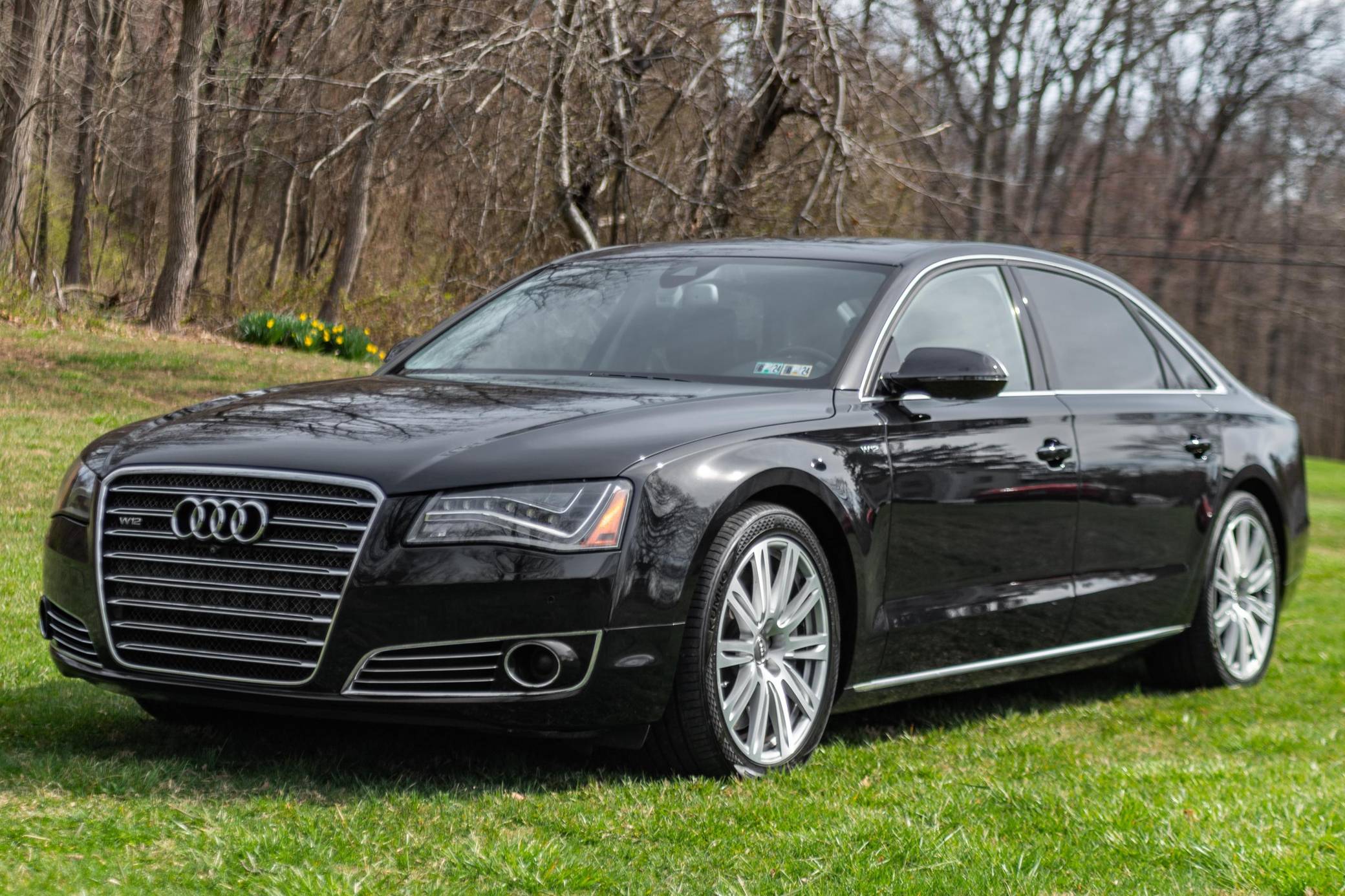
Integration with Audi’s MMI (Multi Media Interface) system enables comprehensive key fob customization, allowing users to configure operational parameters such as approach sensitivity, automatic locking delays, and personalized welcome lighting sequences.
This customization capability enables each A8 owner to tailor the key fob behavior to their specific preferences and usage patterns. The A8 key fob incorporates advanced battery management systems that monitor charge levels and provide early warning of battery replacement needs through the vehicle’s information display system.
This proactive monitoring prevents unexpected key fob failures while enabling users to plan battery replacement at convenient intervals. Security implementation in the A8 key fob utilizes Audi’s comprehensive automotive cybersecurity framework, incorporating multiple encryption layers and anti-theft measures that protect against sophisticated attack methods.
The system’s security architecture is regularly updated through over-the-air updates that maintain protection against emerging threats. The A8’s smart key system includes integration with Audi connect services, enabling remote key fob management and monitoring through mobile applications.
Users can receive notifications about key fob status, configure system parameters remotely, and even temporarily disable key fobs if they are lost or stolen, providing enhanced security management capabilities.
Build quality in the A8 key fob reflects Audi’s manufacturing precision, with component tolerances and assembly procedures that ensure consistent performance and durability.
The fob’s construction utilizes premium materials selected for their durability, tactile quality, and resistance to wear, ensuring that the device maintains its premium feel throughout years of regular use.
Environmental testing for the A8 key fob includes comprehensive validation across temperature extremes, humidity variations, and mechanical stress conditions that reflect real-world usage scenarios. This thorough testing ensures reliable operation across diverse climatic conditions and usage patterns that A8 owners might encounter globally.
3. BMW 5 Series – The Balanced Key Fob Performance
The BMW 5 Series strikes an optimal balance between advanced key fob functionality and proven reliability, representing BMW’s methodical approach to access control technology that prioritizes consistent performance while incorporating innovative features.
The 5 Series key fob system demonstrates how traditional proximity-based access can achieve sophisticated capabilities through careful engineering and system integration.
BMW’s implementation of key fob technology in the 5 Series incorporates lessons learned from decades of smart key system development, resulting in a refined design that addresses common usage challenges while maintaining robust security.
The system’s architecture emphasizes reliable communication protocols and redundant operation modes that ensure consistent access control performance.
The 5 Series key fob utilizes BMW’s proprietary radio frequency management system that automatically selects optimal communication channels based on environmental conditions.
This adaptive frequency selection ensures reliable operation in challenging electromagnetic environments while maximizing communication range and minimizing power consumption.
Ergonomic design of the 5 Series key fob reflects BMW’s extensive human factors research, with button placement and tactile feedback optimized for intuitive operation.
The fob’s compact design enables comfortable pocket carry while maintaining sufficient size for confident handling and operation, even while wearing gloves or in low-light conditions.

The key fob’s integration with BMW’s iDrive system enables comprehensive customization of operational parameters and personalized vehicle settings.
Upon proximity detection, the 5 Series can automatically configure seat positions, mirror adjustments, climate control settings, and infotainment preferences based on the specific key fob used, enabling personalized vehicle setup for multiple users.
Power efficiency in the 5 Series key fob incorporates BMW’s advanced battery management technology that optimizes power consumption while maintaining immediate responsiveness.
The system utilizes intelligent sleep modes and wake-up protocols that minimize standby power draw while ensuring rapid activation when access is required.
Security features in the 5 Series key fob include BMW’s latest encryption protocols and anti-theft measures that protect against both electronic and physical attack methods.
The system utilizes rolling code technology with automotive-grade encryption that generates unique authentication sequences for each use, preventing unauthorized access attempts.
The 5 Series smart key system includes comprehensive backup access methods, with mechanical key integration and alternative entry procedures that ensure vehicle access even if electronic systems experience temporary failures. These backup systems maintain security while providing reliability assurance for users who depend on consistent vehicle access.
Build quality in the 5 Series key fob reflects BMW’s manufacturing standards, with precision assembly and premium component selection that ensure durability and consistent tactile quality. The FOB’s construction incorporates weather sealing and impact resistance that enable reliable operation across diverse usage conditions.
Integration with BMW ConnectedDrive services enables remote key fob monitoring and management through mobile applications, allowing users to track key fob status, configure system parameters, and receive security notifications. This connected capability provides enhanced convenience and security oversight for 5 Series owners.
4. Mercedes-Benz E-Class – The Sophisticated Key Fob Integration
The Mercedes-Benz E-Class represents sophisticated key fob technology that seamlessly integrates with the vehicle’s comprehensive luxury systems, demonstrating how traditional access control can achieve premium performance through careful engineering and system integration.
The E-Class key fob system showcases Mercedes-Benz’s systematic approach to luxury vehicle technology that prioritizes user experience and long-term reliability.
Mercedes-Benz’s approach to key fob design in the E-Class emphasizes comprehensive system integration that extends beyond basic access control to encompass personalized vehicle configuration and advanced convenience features.
The key fob serves as a personal identifier that triggers customized vehicle settings and welcome sequences tailored to individual user preferences.
The E-Class key fob incorporates Mercedes-Benz’s advanced proximity detection technology that utilizes multiple sensor types to accurately determine key fob position and user intent.
This sophisticated detection system can distinguish between an intentional approach for vehicle access versus incidental proximity, reducing unnecessary system activation and conserving battery power.
The key fob’s construction reflects Mercedes-Benz’s attention to premium quality, with materials and manufacturing processes selected to ensure durability while maintaining the tactile quality expected in luxury vehicle accessories. The FOB’s ergonomic design enables comfortable handling and intuitive operation, with button layouts optimized through extensive user research.
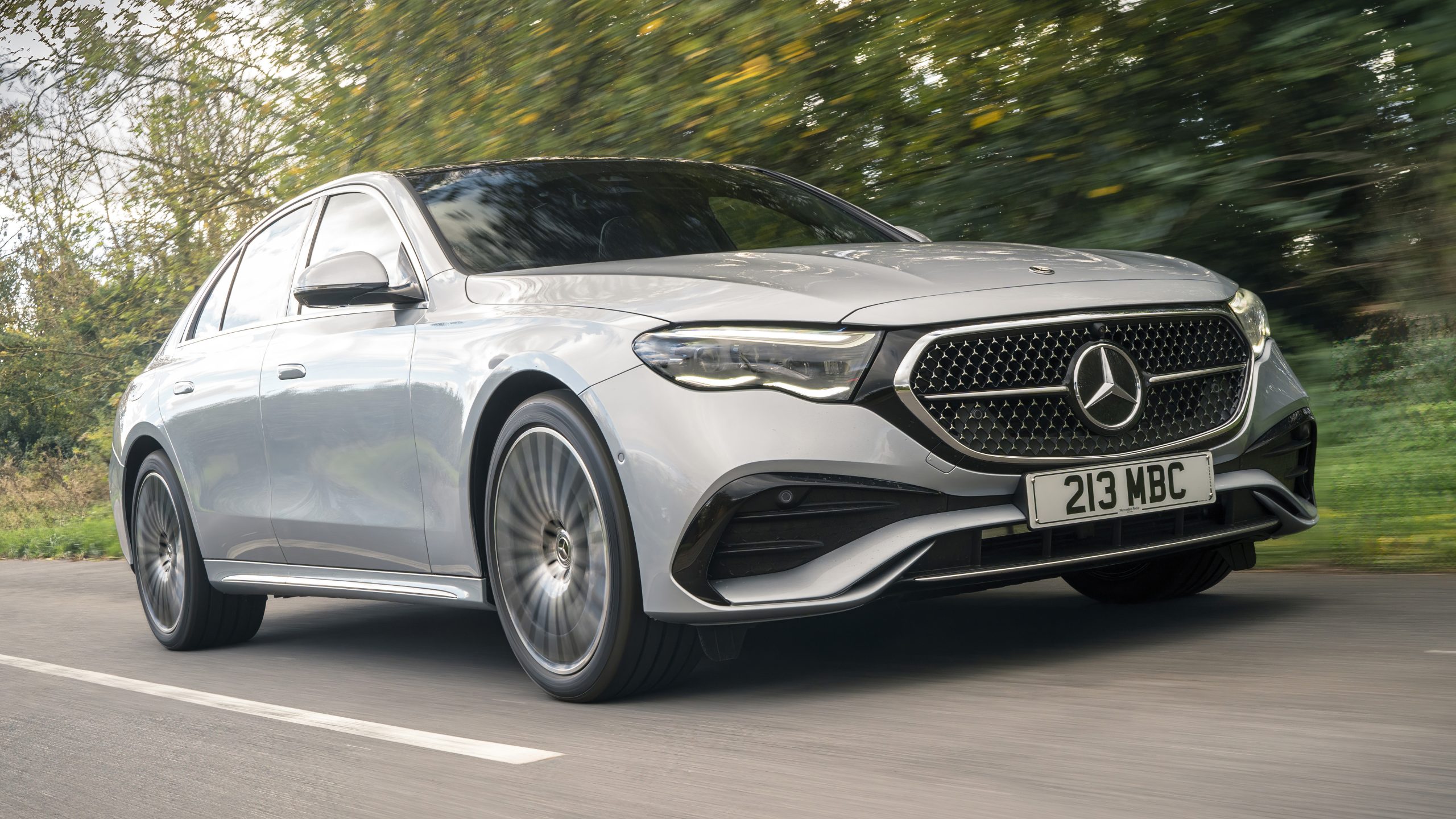
Integration with the E-Class’s COMAND system enables comprehensive key fob customization, allowing users to configure operational parameters such as approach sensitivity, automatic locking delays, and personalized welcome lighting sequences.
This customization capability enables each E-Class owner to tailor the key fob behavior to their specific preferences and usage patterns. The E-Class key fob incorporates Mercedes-Benz’s advanced battery management system that monitors charge levels and provides predictive battery replacement warnings through the vehicle’s information display.
This proactive monitoring prevents unexpected key fob failures while enabling convenient battery replacement scheduling. Security implementation in the E-Class key fob utilizes Mercedes-Benz’s comprehensive automotive security framework, incorporating multiple encryption layers and anti-theft measures that protect against sophisticated attack methods.
The system’s security architecture receives regular updates through over-the-air services that maintain protection against emerging threats. The E-Class smart key system includes integration with Mercedes me connect services, enabling remote key fob management and monitoring through mobile applications.
Users can receive notifications about key fob status, configure system parameters remotely, and access detailed usage reports that provide insights into vehicle access patterns.
Environmental durability testing for the E-Class key fob includes comprehensive validation across extreme conditions that luxury vehicle owners might encounter globally. The FOB’s sealed construction and component selection ensure reliable operation across diverse climatic conditions throughout the vehicle’s operational lifetime.
The E-Class key fob system includes comprehensive backup provisions with mechanical key integration and alternative access methods that ensure vehicle access even if electronic systems experience temporary failures. These backup systems maintain security while providing reliability assurance for owners who require consistent vehicle access.
5. Cadillac CT5 – The American Luxury Key Fob Approach
The Cadillac CT5 represents the American approach to luxury key fob technology, emphasizing bold functionality and user-focused design that reflects Cadillac’s distinctive luxury philosophy.
The CT5’s key fob system demonstrates how traditional access control technology can achieve sophisticated performance while maintaining the distinctive character that defines American luxury vehicles.
Cadillac’s implementation of key fob technology in the CT5 incorporates advanced features that emphasize convenience and user experience, with system design priorities that reflect American luxury vehicle expectations.
The key fob serves as a comprehensive vehicle control device that extends beyond basic access to encompass remote vehicle management and personalized configuration capabilities.
The CT5 key fob utilizes Cadillac’s proprietary communication protocols that provide enhanced range and reliability compared to standard automotive key fob systems.
This advanced communication capability enables remote vehicle control from extended distances while maintaining secure authentication and preventing unauthorized access attempts.
User interface design in the CT5 key fob emphasizes clear functionality with button layouts and tactile feedback optimized for confident operation across various conditions.
The fob’s design incorporates Cadillac’s distinctive styling elements while maintaining ergonomic efficiency that enables comfortable handling and intuitive operation.
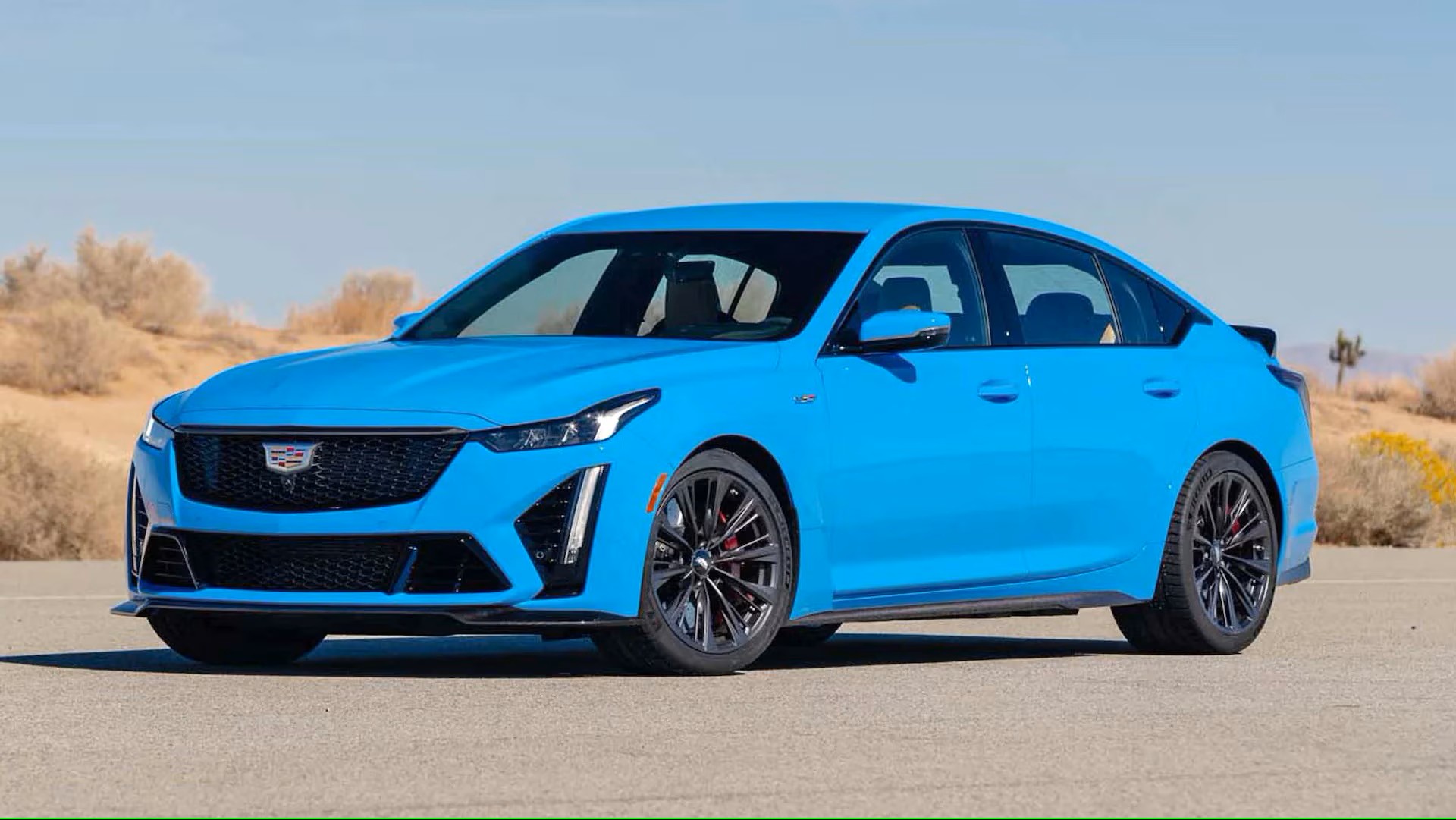
Integration with Cadillac’s CUE (Cadillac User Experience) system enables comprehensive key fob customization and personalized vehicle configuration that reflects individual user preferences.
The system can store multiple user profiles associated with different key fobs, enabling automatic vehicle personalization for families or multiple drivers.
The CT5 key fob incorporates advanced power management technology that maximizes battery life while maintaining consistent performance across various usage patterns.
The system utilizes intelligent power optimization that minimizes standby consumption while ensuring immediate responsiveness when vehicle access or remote control functions are required.
Security features in the CT5 key fob include Cadillac’s latest encryption and anti-theft technologies that protect against both electronic and physical attack methods.
The system utilizes automotive-grade security protocols with regular security updates delivered through OnStar connectivity services. The CT5 smart key system includes comprehensive remote vehicle control capabilities that enable climate preconditioning, engine starting, and vehicle status monitoring through the key fob interface.
These remote control features provide enhanced convenience while maintaining secure authentication and preventing unauthorized vehicle operation.
Build quality in the CT5 key fob reflects Cadillac’s manufacturing standards with premium materials and precision assembly that ensure durability and consistent tactile quality. The fob’s construction incorporates weather resistance and impact protection that enable reliable operation across diverse usage conditions.
Integration with Cadillac’s OnStar services enables comprehensive key fob monitoring and remote management through mobile applications and connected services. Users can access detailed vehicle status information, configure system parameters, and receive security notifications that provide enhanced oversight and convenience.
Also Read: 5 Sedans With the Best Smartphone Audio Quality and 5 With Crackly Bluetooth

